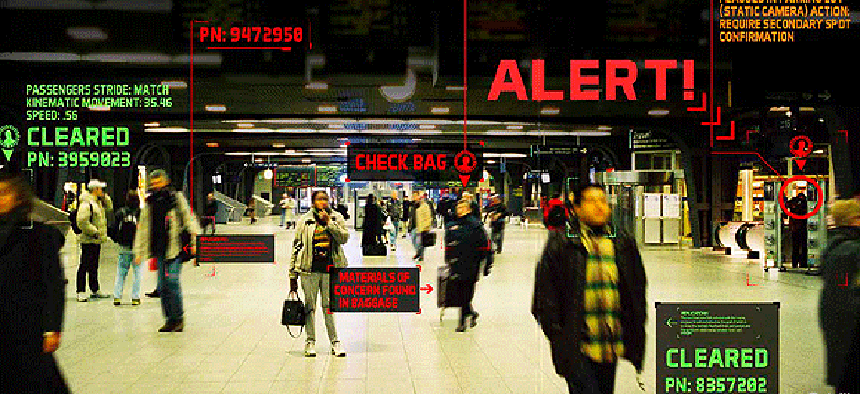Augmented reality comes into focus for government


Connecting state and local government leaders
Advances in AR technology are opening up the field to a wide array of public-sector uses, a Deloitte report says.
Think of viewing the world through the Terminator's eyes. As you scan the scene, data pops up informing you about peoples' weight, exit routes from a building, the composition of liquid in a jar.
That's the picture painted by a report from Deloitte Consulting, "Augmented government: Transforming government services through augmented reality."
As the report notes, the military has led the way in developing augmented reality (AR) devices and applications. As early as 1992, the Air Force developed Virtual Fixtures, a system that an operator could use to work in remote environments.
But advances have made AR technologies more powerful, less expensive and easier to deploy. Only a few years ago, AR required the user to wear a bulky helmet and visor wired with a visual display. Today, as Google Glass demonstrates, AR can be implemented in lightweight glasses. And the Defense Advanced Research Projects Agency is currently working to develop virtual reality contact lenses that can display AR data.
And since AR equipment can send as well as receive data, the link between field agents wearing the devices and the databases back in the home office is interactive.
According to the Deloitte report, "As Millennials and younger generations that have grown up with interactive games and digital media enter the workforce, AR will likely take on an increasingly important role in how companies and governments deliver products and services." The technologies are developing so quickly, argues the report, that it's not too soon for agencies and departments to start planning for implementing them.
The report walks the reader through three hypothetical, but very feasible, implementations.
A Customs and Border Protection agent wearing AR sunglasses is able to see real-time translations of what the driver in a pickup truck at the border is saying. The delay might be a tad awkward, but not as much so as having to fetch a translator. As the agent steps back to examine the vehicle, she gets another message: "Vehicle chassis is two inches lower than standard make. Search all compartments."
At an airport, a Transportation Security Administration agent monitoring a security camera notes a young male apparently loitering near the back of a closed panel van. She zooms in to focus on the man and, after a face-recognition application makes a match, a message appears indicating he has been tagged for further observation if he enters the airport. The agent presses an icon labeled "Secondary SPOT confirmation." After that, any agent in the airport wearing the AR device who views the man will see a yellow hue around him.
A first responder in a helicopter is searching a city for survivors after a hurricane has damaged buildings and crippled much of the infrastructure. Wearing AR glasses, he is able to see labels that indicate which buildings have already been searched and cleared. As the helicopter hovers over a school, he is able to see images of the school before the hurricane superimposed over the damaged structures, which can provide important clues as to where the damage, and injuries, might be worst.
Training, education and health care are among the other likely uses for augmented reality.
The report notes that AR is an emerging field, citing analysts estimates that its revenues are expected to grow from about $181 million in 2011 to $5.2 billion by 2016. And it cites some products already in production or under development, such as Google Glass, Microsoft’s Project Fortaleza that enhances gesture recognition and Innovega’s iOptik, multi-focus, AR contact lenses similar to those being developed by DARPA. Intel also is working to develop processing chips specifically for AR.
Considering that many AR products are in their early stages, other products are likely to arrive soon and agencies have diverse needs and states of readiness, the report doesn’t offer specific recommendations on adopting augmented reality products. Instead, the authors urge agencies to ask five questions:
- Who in my organization requires real-time data for decision-making?
- What are the technology and data requirements?
- What are the human resource requirements?
- What are the risks associated with using AR in my organization?
- What impact will AR have on my organization's mission-critical activities?
Augmented reality will become an increasingly common and important tool in everyday life, the report concludes, and agencies should start to consider how it could best serve their missions.




